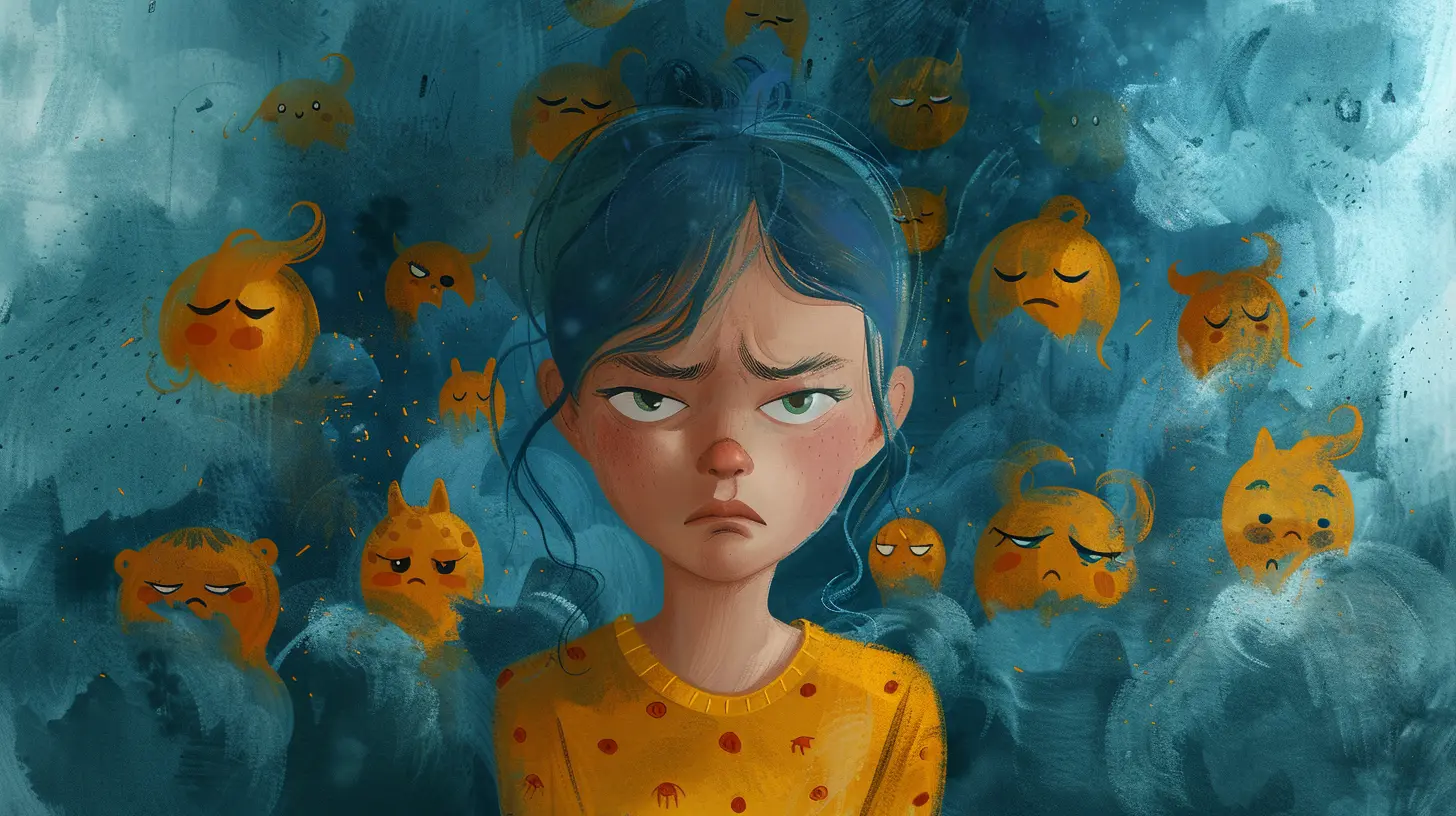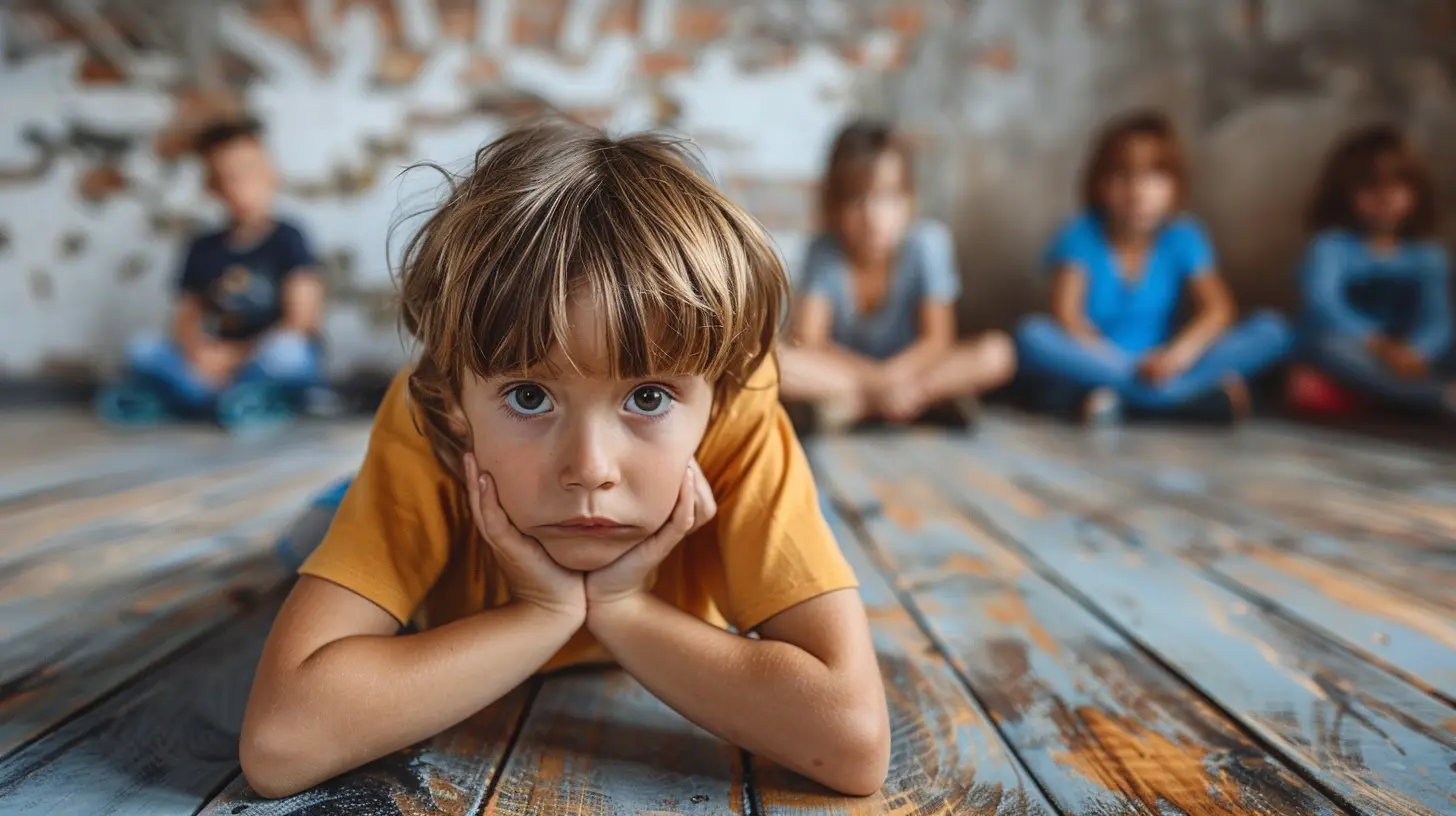Helping Children Cope with Big Emotions
17 October 2025
As adults, we often forget how overwhelming emotions can feel when you're still learning to navigate the world. Children, especially, face a whirlwind of emotions daily, and while they may not have the words to express them, those feelings are very real. Whether it's frustration over a toy that won’t work or sadness because a friend didn’t want to play, emotions can be BIG for little humans.
So, how do we help children cope with these big emotions? That’s the million-dollar question. In this article, we’ll explore practical strategies to guide children through their emotional journeys, ensuring they grow up with the emotional intelligence to tackle life’s ups and downs.
Why Do Children Experience Big Emotions?
Before diving into the “how,” it’s important to understand the “why.” Why do children experience such intense emotions?It all comes down to brain development. Children’s brains are still in the process of maturing, especially the parts responsible for reasoning and emotional regulation. The prefrontal cortex, which helps with impulse control and rational thinking, isn’t fully developed until around the mid-20s. So, when a child bursts into tears or throws a tantrum, it’s not because they’re trying to be difficult—it’s because their brain is still learning how to manage those emotions.
It’s like giving a kid a huge bowl of spaghetti with no fork. They want to eat it, but they don’t quite have the tools yet. That’s where we come in.
The Importance of Emotional Intelligence
Helping children cope with big emotions isn’t just about calming them down in the moment. It’s about teaching them skills they’ll carry for the rest of their lives. Emotional intelligence—being able to recognize, understand, and manage emotions—is a crucial skill that impacts relationships, self-esteem, and overall well-being.Think about the last time you felt really frustrated. Maybe you wanted to yell at someone, but you took a deep breath instead. That’s emotional regulation in action, and it’s something children need to learn, too.
Recognizing Big Emotions in Children
The first step in helping children cope is recognizing when they’re struggling with big emotions. Sometimes, it’s obvious—like when they’re crying or throwing a tantrum. But other times, emotions can manifest in more subtle ways, such as:- Withdrawing: Is your normally chatty child suddenly quiet or avoiding interaction?
- Aggression: Are they lashing out physically or verbally?
- Restlessness: Are they fidgety or unable to focus?
- Clinginess: Are they seeking more attention or comfort than usual?
Once you recognize the signs, you can step in and help guide them through it.
Strategies for Helping Children Cope with Big Emotions
Now that we’ve identified the "why" and the "what," let’s dive into the "how." Here are some effective strategies to help children cope with their big emotions.1. Validate Their Feelings
One of the most important things you can do is validate a child’s feelings. When children feel heard and understood, it helps them process their emotions. Even if the reason behind their frustration seems small to you, it’s huge for them.Instead of saying, “Don’t cry, it’s just a toy,” try something like, “I can see you’re really upset that the toy isn’t working. That’s frustrating!”
Validating their feelings doesn’t mean you’re agreeing with their behavior, but it shows them that their emotions are real and okay to feel.
2. Name the Emotion
Children often struggle to label what they’re feeling. By helping them identify their emotions, you give them a vocabulary to express themselves in the future.For example, if your child is stomping around the room, you might say, “It looks like you’re feeling really angry right now. Is that right?” This not only helps them understand their emotions but also normalizes talking about feelings.
3. Teach Deep Breathing and Mindfulness
Have you ever noticed how your heart races when you’re angry or upset? It’s the body’s natural response to stress. Teaching children deep breathing exercises can help calm their bodies and minds when emotions are running high.A simple breathing exercise is the “balloon breath.” Ask your child to imagine they’re blowing up a balloon. Have them take a deep breath in through their nose, then slowly exhale through their mouth like they’re blowing up a big balloon. This helps regulate their nervous system and gives them something concrete to focus on.
Mindfulness exercises, like focusing on their senses (e.g., “What can you hear right now?”), can also be useful in bringing them back to the present moment.
4. Create a Safe Space
Sometimes, children need a break from the situation to calm down. Having a designated “calm-down corner” can be a great way to offer them a safe space to regulate their emotions.This space doesn’t need to be anything fancy. It could be a cozy corner with pillows, stuffed animals, and perhaps some sensory items like a stress ball. It’s a place where they can go when they’re feeling overwhelmed to relax and regroup.
5. Model Emotional Regulation
Children learn by watching the adults around them. If they see you handling your emotions in a healthy way, they’re more likely to mimic that behavior.Next time you’re feeling frustrated, model how to cope with it. You might say, “I’m feeling really frustrated right now, so I’m going to take a few deep breaths to calm down.” This shows them that it’s okay to have big emotions and that there are healthy ways to manage them.
6. Use Positive Reinforcement
When a child successfully manages their emotions, celebrate it! Positive reinforcement goes a long way in encouraging good behavior. You could say something like, “I’m really proud of how you handled your frustration today. You took deep breaths and calmed down on your own. Great job!”This reinforces the idea that emotional regulation is something they can achieve and should feel proud of.
7. Encourage Communication
Sometimes, children just need to talk it out. Encourage open communication by asking open-ended questions and letting them express their feelings without judgment.Instead of asking, “Are you okay?” try, “Can you tell me what’s going on in your head right now?” This invites them to share more and helps them practice putting their feelings into words.
When Should You Seek Professional Help?
While most emotional outbursts are a normal part of childhood, there are times when professional help may be needed. If you notice any of the following signs, it could be worth consulting a therapist or counselor:- Emotional outbursts are frequent and extreme.
- Their emotions are interfering with daily activities (e.g., school, friendships).
- They seem to be struggling with anxiety or depression.
- You feel overwhelmed or unsure of how to help.
Never hesitate to seek help. Mental health professionals can provide additional tools and strategies to support both you and your child.
Common Pitfalls to Avoid
When helping children cope with big emotions, there are a few common pitfalls to avoid:1. Dismissing Their Feelings
It’s easy to fall into the trap of saying, “It’s not a big deal,” or “You’re fine.” However, dismissing their feelings can make them feel misunderstood and invalidated.2. Trying to Fix Everything
Children need to learn how to navigate their emotions, not just rely on you to fix the problem. Instead of jumping in to solve the issue, guide them through the process of understanding and managing their emotions.3. Punishing Emotional Outbursts
While it’s important to set boundaries, punishing a child for having big emotions can teach them to suppress their feelings, leading to emotional difficulties later in life. Instead, focus on helping them understand and manage their emotions.Final Thoughts
Helping children cope with big emotions is no small feat, but it's one of the greatest gifts you can give them. By teaching them emotional intelligence, you're equipping them with essential life skills that will serve them long into adulthood.Remember, it’s not about preventing big emotions from happening—it’s about helping them understand, process, and manage those emotions in a healthy way. With patience, empathy, and the right tools, you can guide your child through their emotional journey and help them become resilient, emotionally-aware individuals.
all images in this post were generated using AI tools
Category:
Child DevelopmentAuthor:

Olivia Lewis
Discussion
rate this article
1 comments
Signe Banks
Empowering our children to navigate their big emotions is a gift that lasts a lifetime. Let’s nurture their resilience and foster a brighter, emotionally intelligent future!
October 20, 2025 at 4:53 AM

Olivia Lewis
Absolutely! By empowering children to understand and manage their emotions, we equip them with essential skills for life. Let's continue to support their emotional growth for a brighter future!


